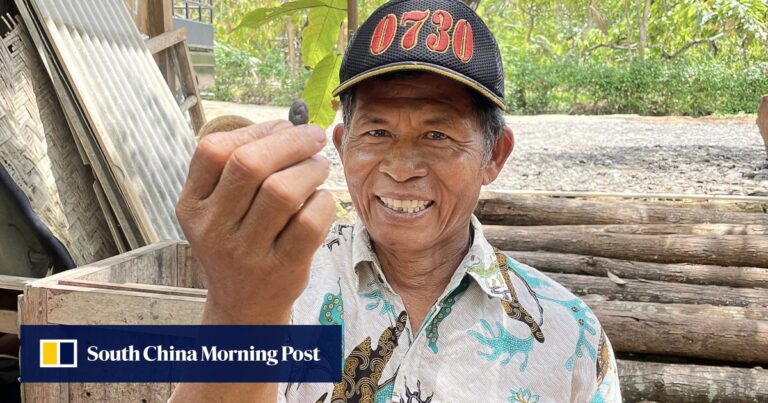Until about 30 years ago, most people here made their living by farming paddy fields, tending to sheep on the plains, and sourcing stone and wood from the volcano that gives the village its name.
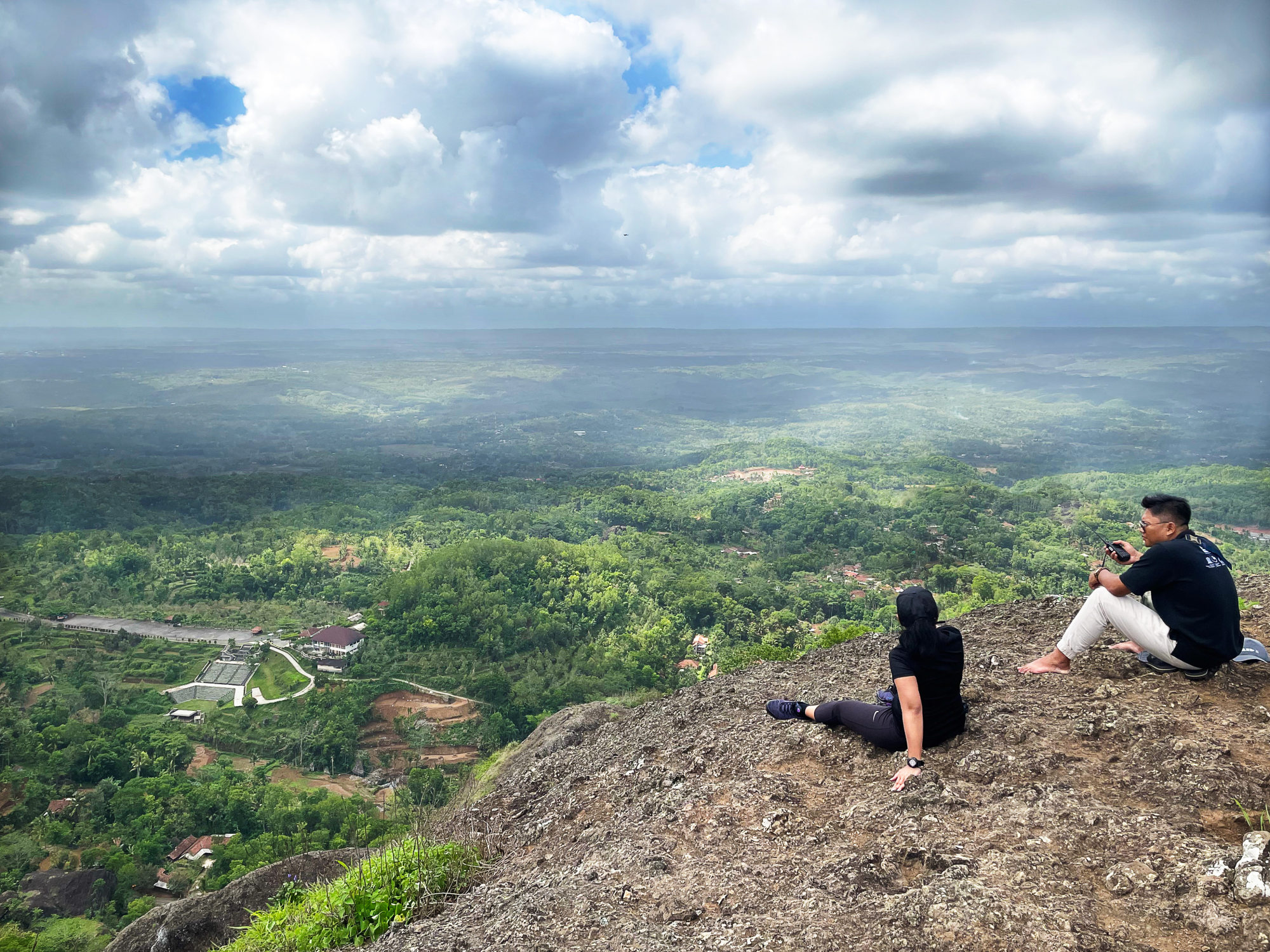
Now everyone benefits financially through Pokdarwis, the village’s tourism working group. From short-term efforts to long-term plans, everything is led by local leaders, with the villagers responsible for their present and future.
The approach earned Nglanggeran the Best Tourism Village award in 2021. Part of a global initiative from UN Tourism, the award acknowledges villages “where tourism preserves cultural heritage and traditions, celebrates diversity, provides opportunities and safeguards biodiversity”, according to the United Nations agency.
The first step towards becoming a tourism destination involved storytelling related to Mount Nglanggeran, an extinct volcano that forms part of the Mount Sewu Unesco Global Geopark, explains Pokdarwis head Mursidi (who, like many Indonesians, goes by one name), pointing to the peak that can be seen from the village.
With legends, geography and nature as hooks, young villagers were able to attract domestic tourists interested in hiking to the summit, gradually adding homestays and activities such as farming to broaden the appeal.
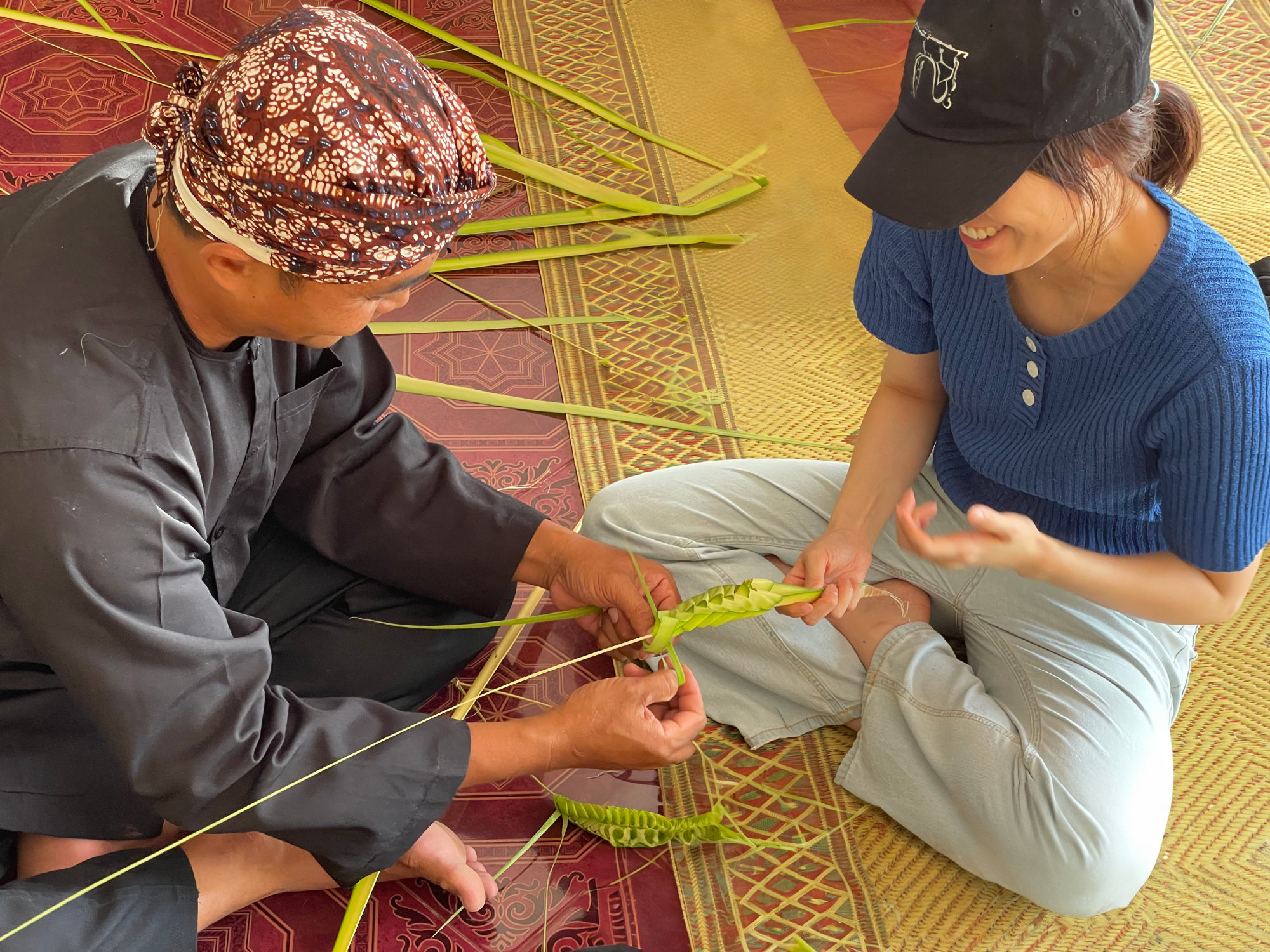

Today, the village offers tourists 13 experiences, from making celebratory decorations out of coconut leaves to joining musicians to play in a karawitan (a Javanese percussion performance) and cycling along picturesque paths.
Like the first visitors two decades ago, my trip is centred on a climb up the 700-metre-high (2,300ft) Mount Nglanggeran. As the path winds up and up, at times I have to squeeze through narrow gaps between massive boulders, pull myself up on ropes, and climb ladders fixed over otherwise impassable terrain.
It takes less than two hours to reach the summit. The reward is panoramic views of terrain that alternates between rocky and verdant as far as the eye can see.
At the bottom of the mountain stands the Pembibitan Biji Kakao plantation, where I join a tour to discover how cacao beans are transformed into nibs used for making chocolate.
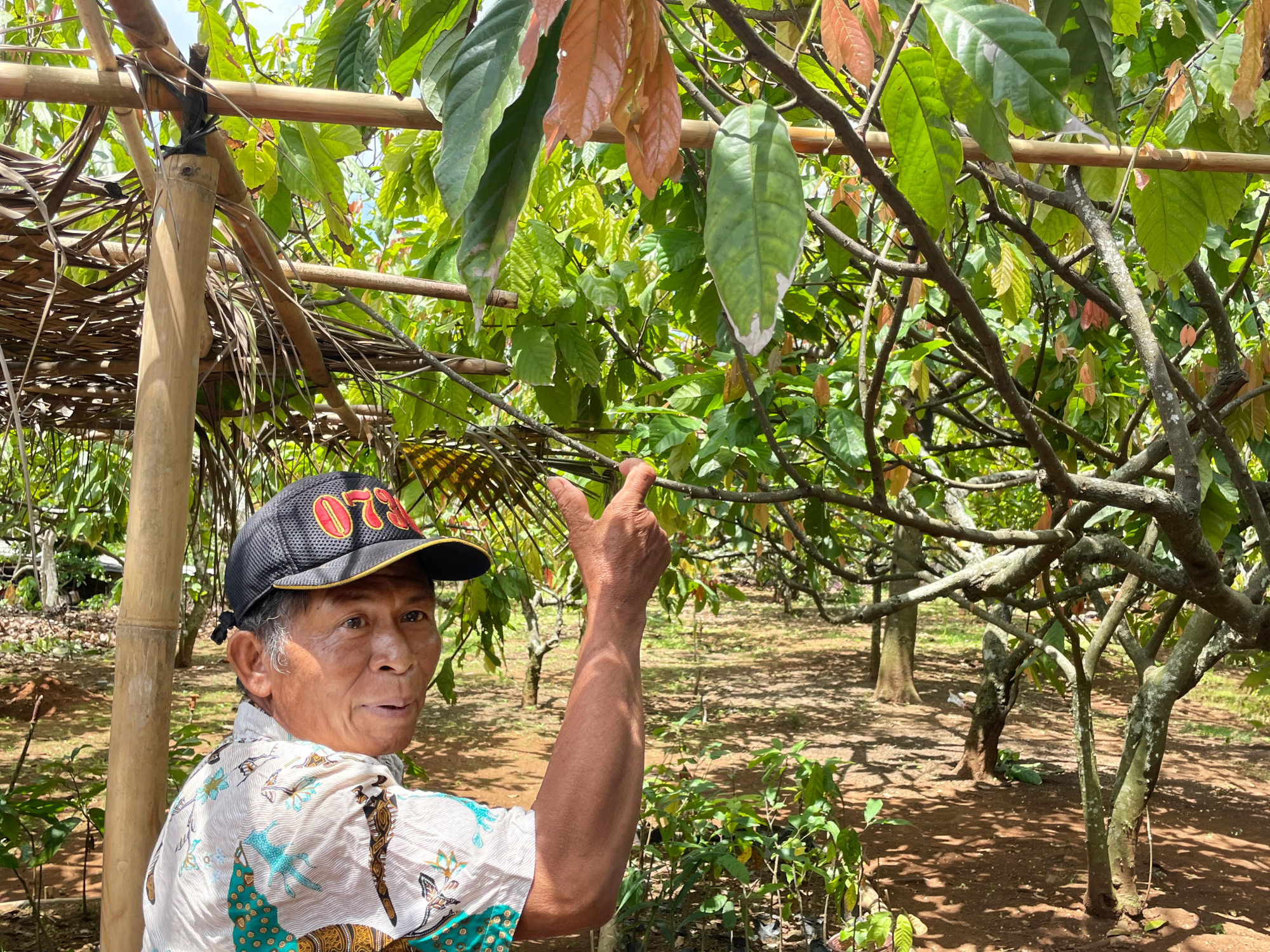
“Our work can be painstaking, but it’s important in order to create delicious items,” says one farmer as he outlines a process that begins by extracting cocoa seeds from the ripe pods of plants that have been productive for at least a decade.
After the seeds are mixed with ash, washed and drained, they are germinated and planted as seedlings, which are watered, weeded and otherwise attended to by Nglanggeran farmers.
Near the plantation, the Griya Cokelat (House of Chocolate) is abuzz with activity as its apron-clad women workers receive a fresh supply of nibs.
One staff member roasts the cacao in a pan over a gas stove while her colleagues set up the equipment needed to separate the cocoa butter – which is used for cosmetic treatments in the connected chocolate spa – and the cacao, which is milled and sieved to create a fine, smooth powder.

In the adjacent room, with the smell of freshly melted chocolate floating on the warm breeze, trays of almond-topped cookies are laid out to dry. Soon they will be wrapped in Nglanggeran-branded packaging and displayed as part of a range of chocolate bars, snacks and drinks in the souvenir shop.
Popular in the bean-to-bar range is chocolate infused with durian, a fruit that has been grown in the village since 2013.
“We’ve harvested six times since planting,” explains Pokdarwis treasurer Lilik Suharyanto, on a tour of the 3,000-tree orchard. “As we don’t grow so much we sell locally, but we’re trying to develop our durian-producing skills,” he continues, as he cuts open a thorny specimen to offer its yellow, custardy flesh.
Each of the village’s experiences was created and is managed by a designated committee.
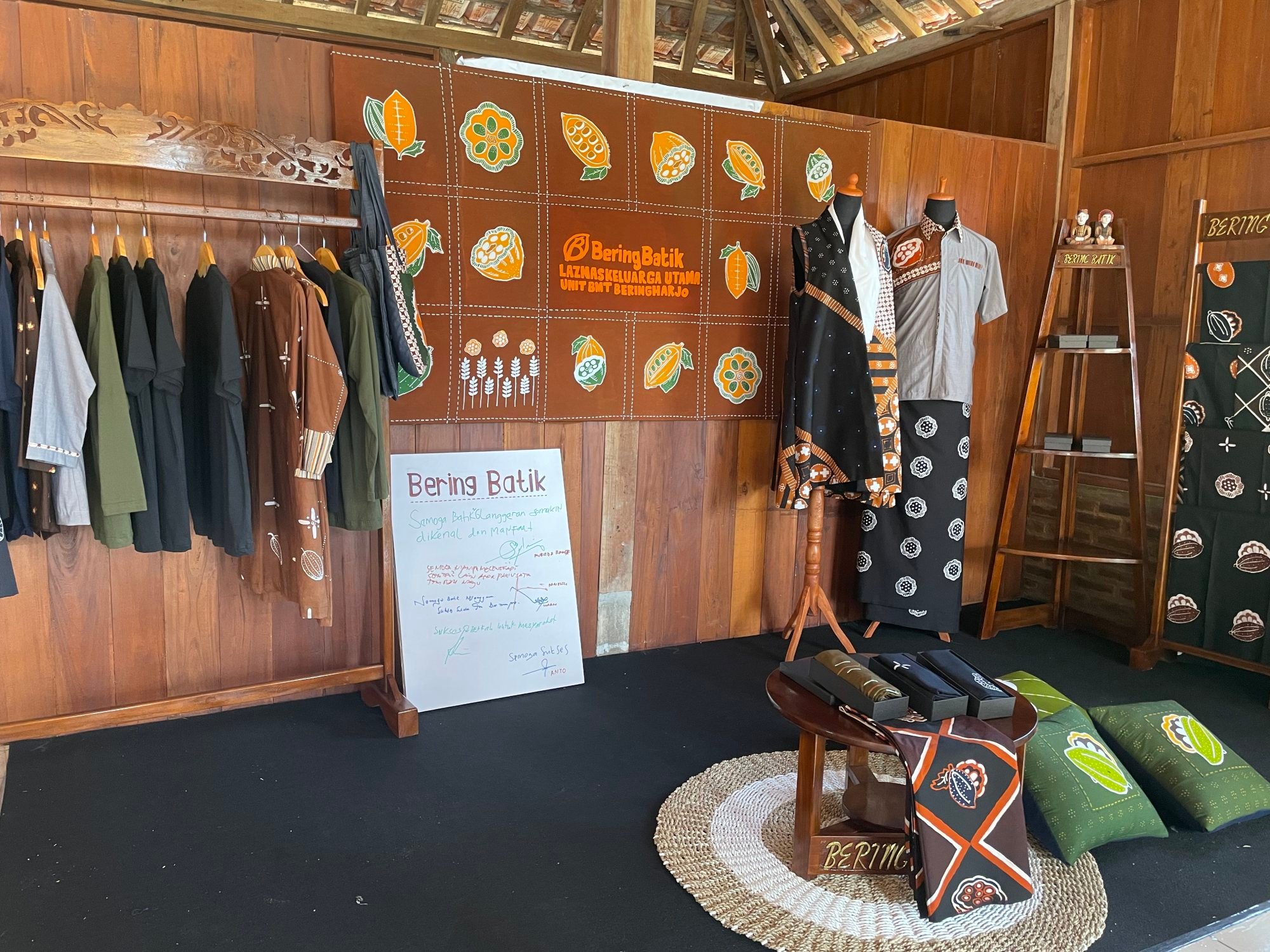
Some 160 people work in farming in Nglanggeran, half dedicated to durian production and half to cacao. Thirty workers are employed at the chocolate factory and shop, with an additional 11 giving treatments in the spa, where chocolate powder and cocoa butter are used in treatments such as hair washing, facials and massages of the hands, feet, head and body.
Another 30 villagers make souvenirs such as traditional masks and batik (fabric dyed using an Indonesian technique of the same name that uses wax to create patterns), while 20 provide tourists with standing rides on open-backed trucks – affectionately called “hot-hot”, as riders enjoy the same temperature both on and off the vehicle.
To support visitor stays, 80 families operate homestays and 20 run stores.
Those families who grow rice and raise livestock also support tourism, albeit indirectly. Their produce – chosen specifically to “bring fortune from the gods” – is used to create visitors’ meals.

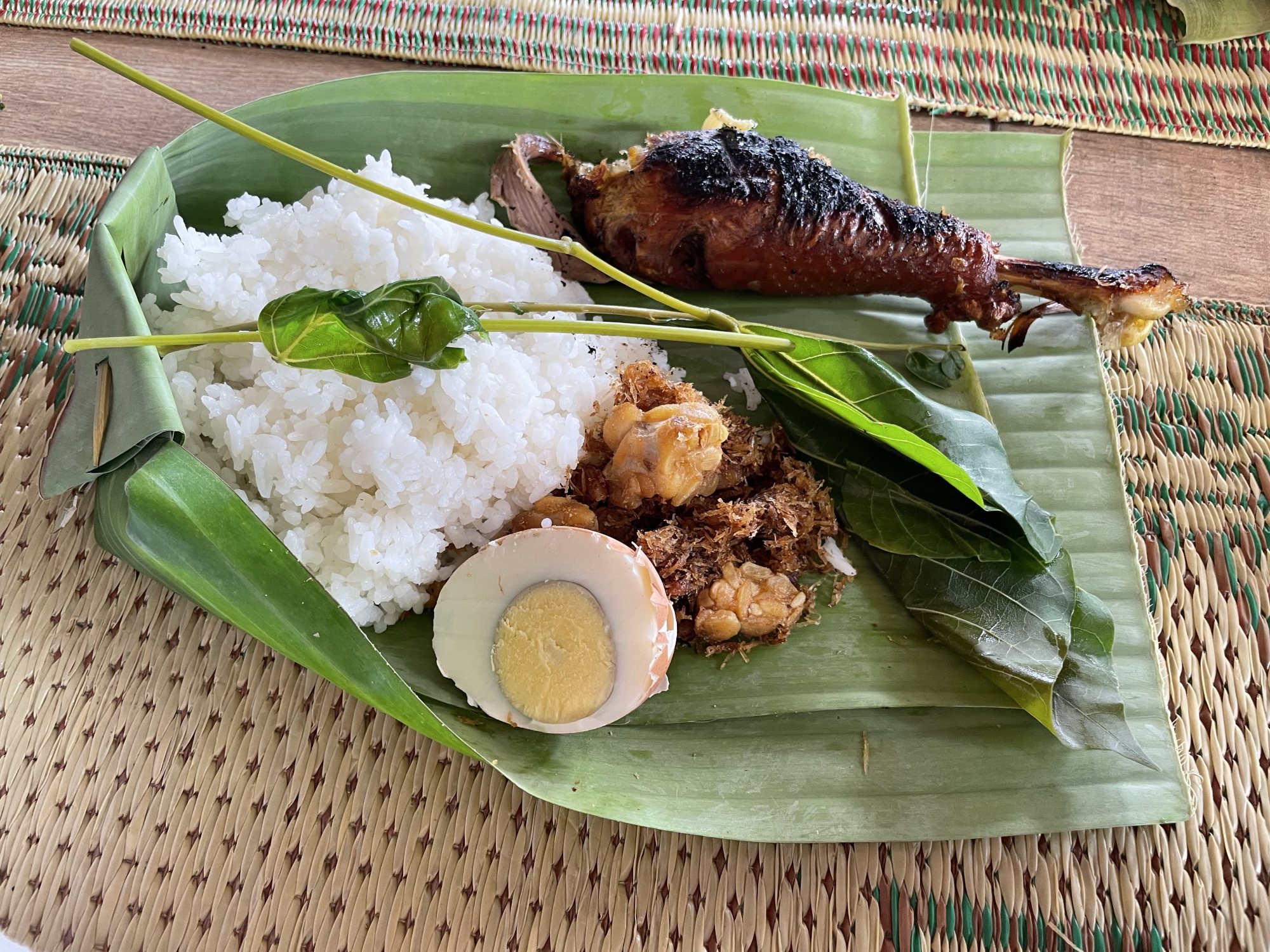
For dinner and lunch – served in two large, open-sided pavilions offering views of life in the village – I am given rice, eggs, chicken, dried coconut, greens and condiments on banana leaves by villagers wearing batik clothing.
Breakfast is provided by the family who put me up in the spare room of their house, within which wooden panel walls stretch almost to the ceiling, so that each room is almost self-contained. Guests share a central communal space, a kitchen and a bathroom with the host family.
Nglanggeran’s model is proving successful, having attracted 58,000 visitors in 2023, including 3,000 from overseas.
“We not only promote Nglanggeran as a place to visit, but as an example of best practice for other villages across the country to emulate in their tourism development,” says one of the many representatives of Indonesia’s Ministry of Tourism and Creative Economy present on this inspection visit.
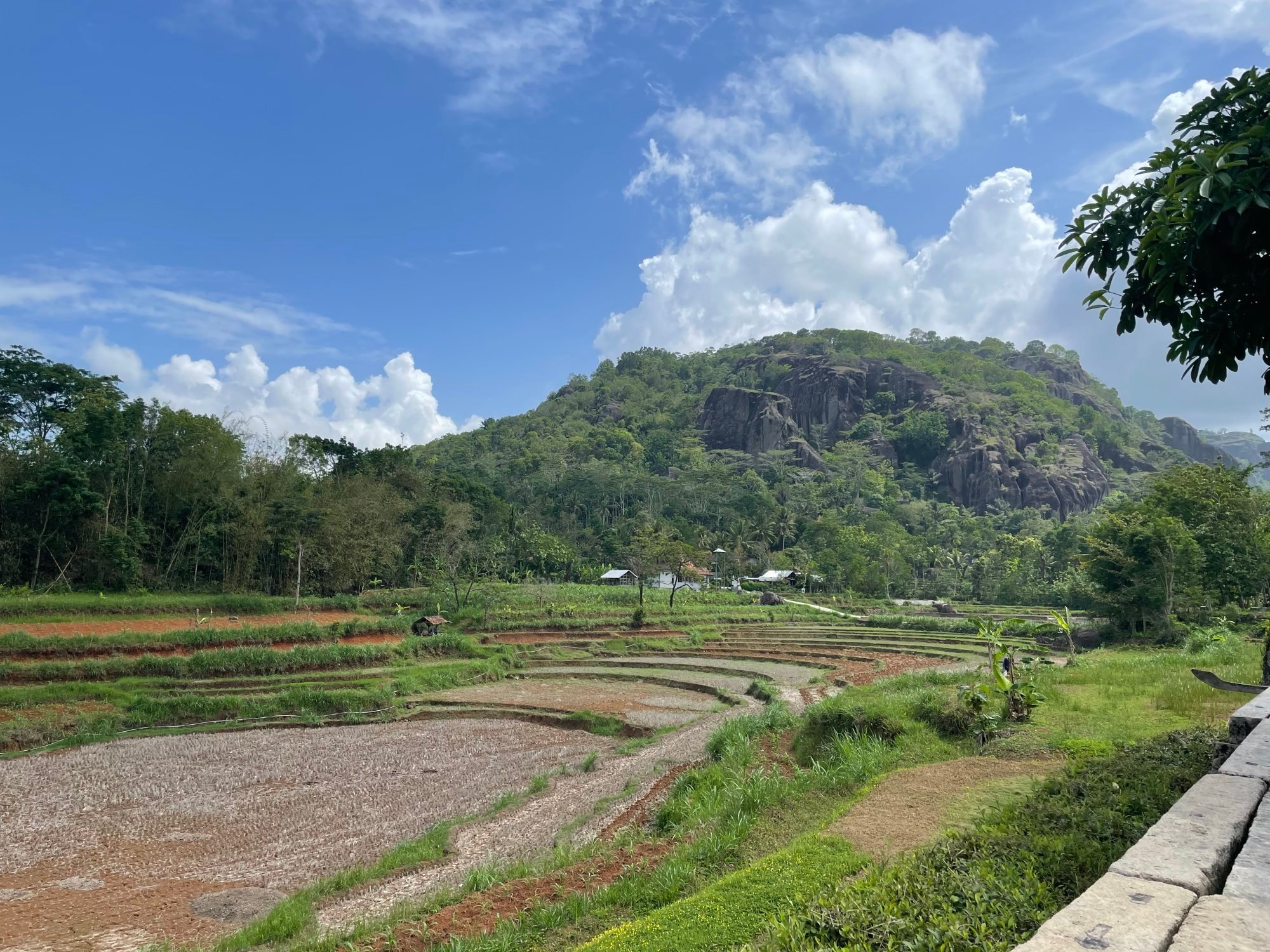
With popularity has come growing interest from companies wishing to build hotels and otherwise develop the village, but Pokdarwis has resisted.
“The village’s tourism concept has been created with the cooperation of local people, so we seek investment only from within the village,” Mursidi says.
“As young people launched our tourism, we want them to be involved more and more, and for the industry to continue in the same sustainable, responsible way.”
That appears possible thanks to support from local and national government, according to Sugeng Handoko, initiator and secretary of Pokdarwis, who plans to add yoga experiences to the tourism mix and sell locally grown herbal products.
“Travellers are increasingly interested in wellness, and we can provide it in Nglanggeran,” he says.
The writer’s visit to Nglanggeran was provided by UN Tourism

